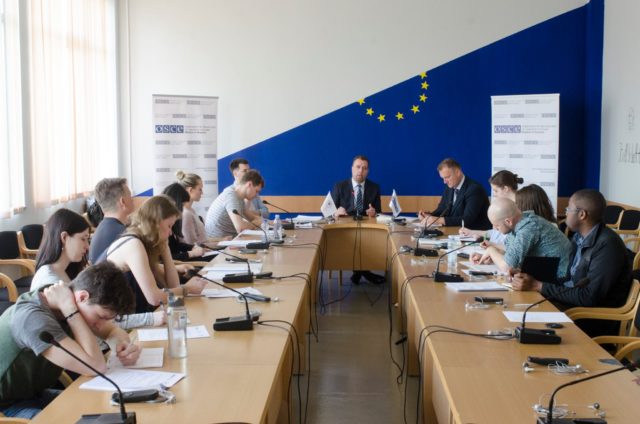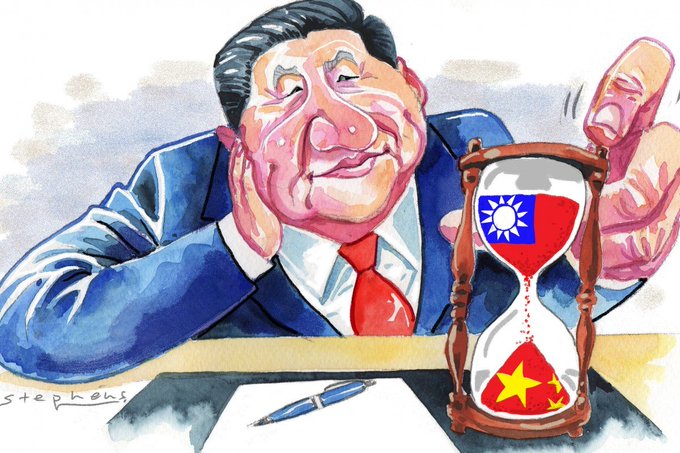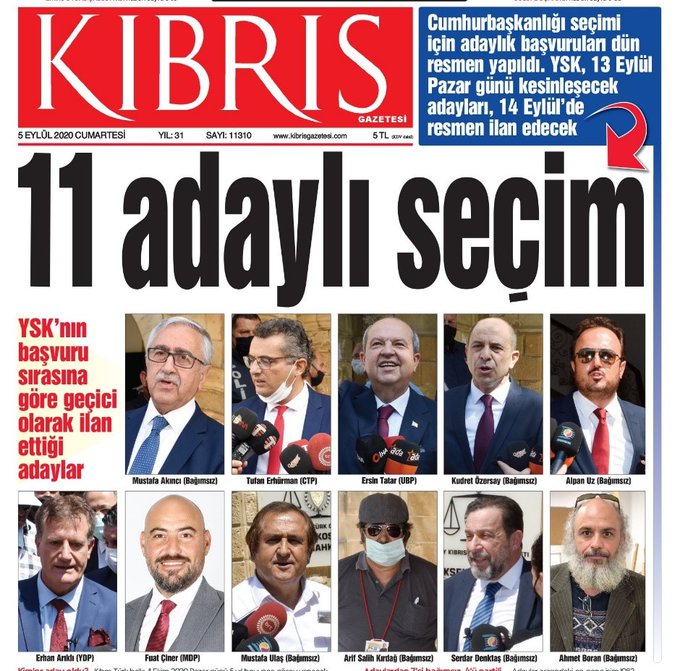Practical Field Research in Conflict Areas: Kosovo
In the center of the University of Prishtina’s (Kosovo) campus lie two contrasting buildings. One is the Church of Christ the Savior – a hollow, unfinished Serbian Orthodox Church bearing a golden cross. Less than one hundred meters away stands the Prishtina National Library – an eccentric structure of domes and concrete webs built by a famous Croatian architect in 1982. Yet the building is often disliked by most residents.
This view is an odd concoction, but so is Kosovo. Its past, like the abandoned Serbian Church, seems dark and incomplete. Its present, like the library, seems complicated and foreign-built, but still a structure no one is completely satisfied with. This was the odd flavor in the air of Prishtina: lively and welcoming, but with a taste of frustration. The future was perched, but uncertain whether it would take flight, and, if yes, then to which destination.
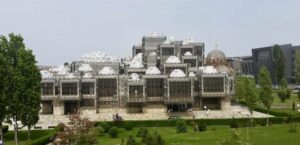
The Prishtina National Library in the front and the Church of Christ the Savior in the back. Photo credit: Stephanie Köppl.
On May 8, 2017, nine students and I flew to Prishtina, Kosovo for a one-week study trip as a part of our course “Practical Field Research in Conflict Areas” at the Johan Skytte Institute of Political Studies. Throughout the semester we had studied the conflict between Serbia and Kosovo, the role of international actors, and the process of state-building. Led by Professor Eiki Berg and PhD Fellow Thomas Linsenmeier, we spent five intense days having discussions with expert speakers and visiting a variety of sites. All of this was graciously organized by the University of Prishtina and the OSCE Mission in Kosovo.
When we arrived at Prishtina late Monday evening, our OSCE guide, Fitim Xharfa, greeted us at the airport. We quickly dropped our luggage off at the dormitories and followed Fitim through the bustling city to Tiffany, an Albanian restaurant tucked behind the soon-to-be renovated soccer stadium. Members of the OSCE staff warmly welcomed us as we enjoyed a seemingly never-ending array of Albanian dishes and the traditional liquor – “rakia”. Around 1 a.m., we returned to the dorms, the first of many late nights when we would miss the odd midnight curfew.
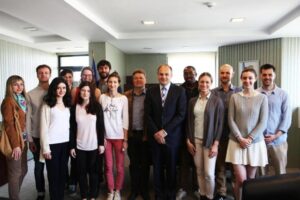
Group photo with the Minister for Foreign Affairs of the Republic of Kosovo, Mr. Enver Hoxhaj. Photo credit: Ministry of Foreign Affairs of the Republic of Kosovo.
The next five days were stacked. In the mornings, we met with academics, politicians, civil society workers, and professionals from international organizations who each discussed a different aspect and perspective on the current state of Kosovo. During the afternoons we visited numerous sites, such as the Assembly of Kosovo, the OSCE Mission in Kosovo, Mitrovica South, and two Serbian-majority municipalities, Gračanica and Mitrovica North. While our time in Kosovo cannot be covered in a single blog post, I will briefly recount my experiences in Prishtina, Gračanica, and North Mitrovica.
A Brief Background
The conflict between Serbia and Kosovo is long-lived and relentless. Throughout the 1990s, Yugoslavia crumbled as former republics and provinces sought independence, while Serbian nationalism rose. Ethnic tensions between Serbians and Kosovo Albanians escalated, and by 1998 the Serbian authorities in Kosovo led a crackdown against Kosovo Albanians and the paramilitary Kosovo Liberation Army (KLA). In 1999, NATO began an air campaign against Serbian forces, citing claims that Serbia was responsible for ethnic cleansing and human suffering. Eventually, Serbian forces retreated from Kosovo, leaving it under UN administration and the Kosovo Force’s (KFOR) protection.
After nearly nine years under the United Nations Mission in Kosovo’s rule (UNMIK), Kosovo declared a unilateral declaration of independence, establishing the Republic of Kosovo in 2008. Yet Kosovo’s status remains contested. As of 2016, over 100 nations have recognized the Republic of Kosovo as a legitimate state. However, Serbia, Russia, and others, including five EU member states, have refused such recognition. In 2013, Serbia and Kosovo held their first talks in Brussels on the normalization of relations, reaching a 15-point agreement which covers topics ranging from the role of Serbian-majority municipalities in Kosovo to border crossings. Nevertheless, many points of the agreement have yet to be fully implemented, and the possibility of rising tensions remains.
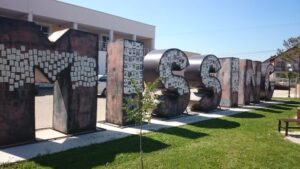
The missing monument in Gračanica, which depicts photos of Serbs who are still missing from the war in 1999. Thousands of people, both Kosovo-Albanian, Serbian and other minority ethnic groups lost their lives during the conflict, with many bodies still missing. Photo credit: Eiki Berg.
Prishtina
Prishtina, the capital of Kosovo, is a city atop hills, lively and diverse. Every day one can hear church bells ringing, the call to prayer from the minarets, horns honking, a dog barking, bars blaring, and people laughing and talking. This vibrant and youthful city holds Kosovo’s largest university, the University of Prishtina, which hosted many of our lectures and supplied us with an endless amount of delicious coffee to begin our long days.
It was great to be young in Kosovo. It seemed that nearly everyone was. More than 50% of Kosovo’s population is under the age of 25, and is easily seen in the clubs and bars that party late into the nights. At the same time, unemployment is around 40%, hurting the youth in particular. For many, higher education won’t be a huge advantage on the job market, and thus many go abroad to work, particularly to Germany and Switzerland. The remittances they send home largely support their entire families. One of the translators recounted how he had worked two jobs to support up to eight people at one point, and that his situation was not unusual. Although Kosovo is a fairly poor country, a mixture of foreign aid and remittances deliver some wealth, as I spotted many expensive German cars and even a Suburban with Florida license plates.
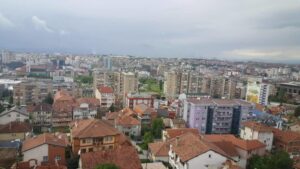
Prishtina, the capital of Kosovo. Photo credit: Eiki Berg.
Thus, one of the first oddities one notices upon arrival is the international influence in Prishtina, most notably seen in the choice of flags and street names. Although Kosovo has its own official state flag, it is the red Albanian flag with a silhouetted black double-headed eagle which is most frequently flown and adorned. In fact, one morning we spotted two men riding a bulldozer who stopped at every lamp post along the street and attached Albanian flags opposite the flags of Kosovo. Such Albanian nationalism is not unusual among the Kosovo-Albanian majority.
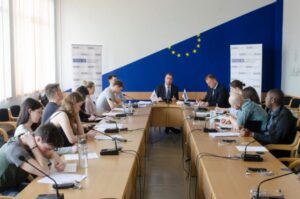
Professor Afrim Hoti from the University of Prishtina, giving his lecture “Democratization and institution-building in practice. Liberal peace without politics?” Photo credit: OSCE Mission in Kosovo.
However, the flags of other international states and organizations are almost as numerous, especially American and German flags, which flew in many public areas, as well as the streets named “Bill Klinton,” “Xhorxh Bush,” and “Mother Teresa Boulevard.” While the international organizations in Kosovo are criticized, they are still largely seen as a savior figure by many Kosovo-Albanians. And, although an independent state, Kosovo is still heavily buttressed and influenced by actors like the EU, OSCE, UNMIK, and the U.S. Oftentimes, people appear to have a love-hate relationship with them – appreciating their assistance, but complaining of their patronizing demands.
On paper, terms like post-conflict society, power-sharing, and communities portray an idealized version of the state. In reality, it still largely remains in conflict (albeit not predominantly physical) and integration of Serbian-majority municipalities is slow and lacking. There is a general frustration with the government in Kosovo, which some claim only pass laws in order to check off international requirements or standards toward prospective EU membership. This, of course, was never mentioned by the Kosovo-Albanian politicians whom we met, yet appeared to be over-dramatized by some conspiratorial Serbians.
Not surprisingly, the Serbian flag is nowhere to be seen in Prishtina, a city of the Kosovo-Albanian majority. Although Serbian and Albanian are the two official languages of Kosovo, it is not uncommon to see Serbian-language streets signs defaced in the Albanian-majority municipalities, and vice versa in Serbian majority municipalities. Likewise, Kosovo’s other ethnic groups – including Roma, Gorani, Egyptians, Turks, Ashkalis, Bosniaks, and Croats – may speak their own languages in addition to Serbian or Albanian, and have unique problems of their own. Nevertheless, more than 90% of Kosovo citizens are Kosovo-Albanians, the majority of whom are Muslims.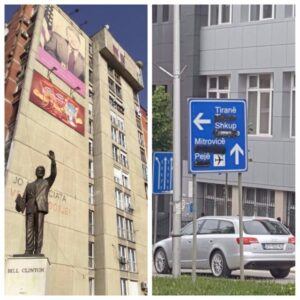
On the left: a statue of former US President Bill Clinton in Prishtina, Kosovo. Photo: James Drxyton. On the right: a street sign in Prishtina, depicting the defacing of the Serbian language. Photo credit: Heidi Mõttus.
Another first for me were the tall minarets that dotted the city skyline. It was a unique experience to hear both the church bells and the calls to prayers from the minarets within an hour and on the same street. It was my first time in a Muslim-majority country, and I cut dinner short one night to go and visit a mosque. It was quite beautiful in blue and white, with a large courtyard in front, where a television crew was interviewing a man and many others were arriving for Friday evening prayers.
However, during the rest of the night most Kosovo-Albanians can be found at the bars and restaurants which nearly never sleep. Fitim took a few of us who did not want to watch the Eurovision semi-finals to his friend’s local bar, where we had drinks and listened to a live band playing ’80s music. I got the feeling that it was a conservative society, but not fundamentally religious. Most people drank alcohol and smoked cigarettes, although I don’t know why, because the best drug of choice was clearly their cuisine.
As a foodie myself, I must also recommend Kosovo’s delicious cuisine. Having never drank coffee before living in Europe, I admit that Kosovo has the best coffee I’ve ever tried thus far, and delicious wines for the evening. And speaking as an aspiring carnivore, the variety of meat is endless and is always delivered on huge platters like a feast. Having not eaten a kebab for over six months, I gorged myself in some unhealthy, nightly snacks and soon became a regular visitor of the local shop. However, Kosovo was also the first place where I’d ever tried vegan food, as one my fellow coursemates was vegan. As a meat-loving country, Prishtina only has one vegan restaurant; however, I must admit it had a delicious vegan “burger.”

The Serbian Orthodox church in the center of Gračanica Monastery. Photo credit: Liesa Aitton.
Gračanica
On Thursday, the OSCE white vans drove us to the nearby Serbian-majority municipality of Gračanica, east of Prishtina. Although technically a municipality of Kosovo, Serbian flags were flying and campaign posters of the Serbian Prime Minister, Aleksandar Vučić, were plastered everywhere in the small town square. It was clearly a parallel society with its own brand of “integration.” Although it was technically a municipality of Kosovo, I thought we were in Serbia the moment we arrived.
First, we visited the Gračanica Monestary, a UNESCO World Heritage site, where a knowledgeable tour guide directed us around the 14th century Serbian-Orthodox church in the middle of the complex. For Kosovo-Serbians, Orthodoxy is another factor that differentiates them from the Muslim Kosovo-Albanians, as the tour guide made sure to point out the frescoes which he contended had been damaged by the Ottoman Turks.
We then returned to the main municipal building, where we met with municipal officials of Gračanica, who welcomed us and answered students’ questions about how the municipality operated and how it was being further integrated into the government of Kosovo. The officials emphasized the exemplary performance of their municipality, particularly their recognition of the Roma language as an official municipal language. But they also noted troubles with the census and its negative effect on the small, municipal budget, while avoiding discussion of outside funding and support from Serbia.
Afterwards, we spoke with leaders from two Serbian-run non-governmental organizations (NGOs) in Gračanica, who spoke about their personal experiences operating Serbian NGOs, common difficulties experienced by the Serbian communities, and initiatives currently underway. Overall, the leaders in Gračanica were tolerant of their new status in Kosovo, but still sought to remain separated and distinct, with even one man openly hoping that history would change and that Kosovo would be returned to Serbia. The NGO leaders were much more candid than the municipal officials, complaining, for instance, about physical abuse, low educational standards, a dwindling youth with few prospects, and a limping economy.
North Mitrovica
On the last day of our visit we went to the infamous and once united cities of South and North Mitrovica. Since the conflict in 1999, the city of Mitrovica has been separated along ethnic lines, dividing Mitrovica into South Mitrovica, a Kosovo-Albanian majority municipality, and North Mirtovica, a Serbian-majority municipality. The infamous Mitrovica bridge crossing the Ibar river was once the KFOR-guarded divide between the communities, but it is being rebuilt and is now partially open to pedestrians, who can freely move back and forth. Yet despite the lessening tensions, the communities largely remain separated and with little interaction between the two. I have to wonder if such a merger is even possible, let alone wanted. While visiting both Serbian communities, I got the feeling that Kosovo-Serbians did not really want to integrate into, let alone accept, the status of Kosovo, apart from the prospective economic benefits in doing so. Thus far, integration has been slow, with many parallel Serbian institutions refusing to concede to Kosovo’s control.
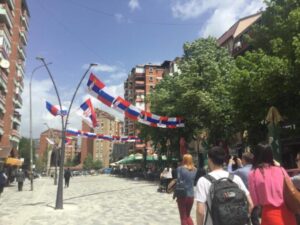
A busy street adorned with Serbian and Russian flags in the Serbian-majority city of Mitrovica North. Photo credit: Arpi Grigoryan.
When the OSCE officers led us to North Mitrovica, we immediately noticed significant differences between the two ethnic majority municipalities. Technically a municipality of Kosovo, as agreed in the Brussels talks with Serbia in 2013, the city of North Mitrovica appeared anything but that. Banners of Serbian and Russian flags hung above the town center, which was lined with various bars and restaurants, and no sign of the Albanian language, neither spoken nor written. Huge murals and Serbian political posters decorated most of the streets, with one such mural comparing Kosovo to Crimea. It was a strange atmosphere, like a state within a state. A similar sentiment was expressed by some who we met there. Although new initiatives by Serbian civil society organizations are attempting to promote tolerance and integration in the community, the cities of Mitrovica South and North appear a long way from reuniting or even normalizing. To me, this idea of reunification or even normalization seemed artificial and idealized, with neither side thrilled by the idea. It appeared to be a goal of international actors, who had determined what “success” was, and not how necessarily people felt.
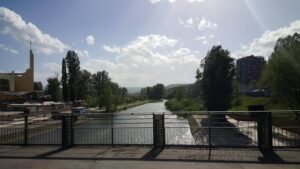
View of the Ibar river over the main bridge in Mitrovica. Photo credit: Heidi Mõttus.
To conclude…
In conclusion, our time in Kosovo was eye-opening, hands-on, and unforgettable. Although we studied Kosovo for the two previous semesters, our field research in Kosovo brought words into life and provided personal stories which relate to and complement the numerous, impersonal journal articles that comprise most university courses. It gave a much-needed human face to our understanding of Kosovo and post-conflict societies in general. For many of us, this experience not only strengthened our academic selves, but our characters as well.
Lastly, I would like to thank the University of Prishtina and the OSCE Mission in Kosovo for organizing an unforgettable experience, and to all the Kosovo-Albanian and Kosovo-Serbian people who warmly welcomed us into their beautiful country. In addition, I would like to give a special thanks to Professor Eiki Berg and PhD Fellow Thomas Linsenmaier, who prepared our course and adventure in Kosovo. And, finally, a warm thank you to my fellow coursemates who put up with my shenanigans for an entire week and largely provided photos for this short blog post: Liesa Aitton, James Drayton, Arpi Grigoryan, Stefanie Köppl, Heidi Mõttus, Sevanna Poghosyan, Mike Renaldi, and Gert Siniloo.
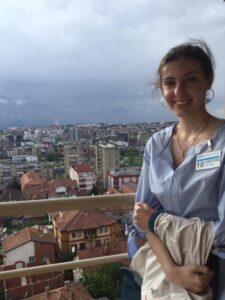
Rebecca Stanley, the author of the blog post, on top of the OSCE building in Prishtina, Kosovo. Photo credit: Arpi Grigoryan.
Rebecca Stanley is a first-year master’s student in the International Relations and Regional Studies Program at the Johan Skytte Institute of Political Studies.


